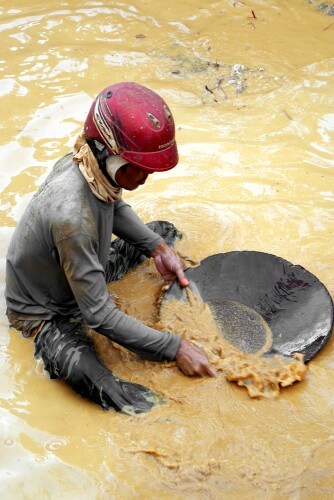Intel and other technology companies come out against "conflict minerals"

It's hard to believe that our day-to-day conversations on social media can have an impact on the civil war that has been raging in the Democratic Republic of the Congo for more than ten years. The problem is not in the content of our messages, but in the devices with which we send them. Smartphones, tablets, personal computers and other gadgets often contain electronic components, which are made of materials called "conflict minerals" - gold, tantalum, tin and tungsten - which are mined in certain mines in the Congo that transfer a share of their profits to armed groups.
In January 2014, chip maker Intel used the stage at the International Electronics Association's CES to raise awareness of the problem and announce that its processors now contain no conflict minerals. According to the company, it has taken steps to have third-party companies monitor its suppliers, and especially the operators of the mines that separate the metals from the ores, and to ensure that they do not succumb to extortion attempts aimed at funneling money to the local commanders.
The very idea of conflict minerals was quite vague four years ago, when an association from the city of Washington called the "Enough Project" presented the subject to Intel. Intel's activity has encouraged other companies to examine the source of raw materials for their products, said Sacha Legeneve, the association's senior policy analyst at the CES conference.
The amount of conflict minerals used by technology companies is less than that of other industries, such as the jewelry industry. However, gold, tantalum, tungsten and tin play an important role in our gadgets. Like many other electronics manufacturers, Intel relies on the high conductivity of gold in printed circuits, connectors and semiconductor packaging. Tantalum is used by the company in some of the capacitors and in the "spraying" process used to manufacture semiconductors. Tungsten also plays a limited role in the semiconductor manufacturing process, while tin is a key component of the tin-silver alloy used to solder the electronic components to the printed circuits.
As of May 2014, all companies are forced to thoroughly examine their supply chain. In August 2012, the US Securities and Exchange Commission (SEC) began requiring companies to report annually on the source of the metals gold, tin, tungsten and tantalum used in their products.
The article was published with the permission of Scientific American Israel

One response
"Gadgets" = gadgets,